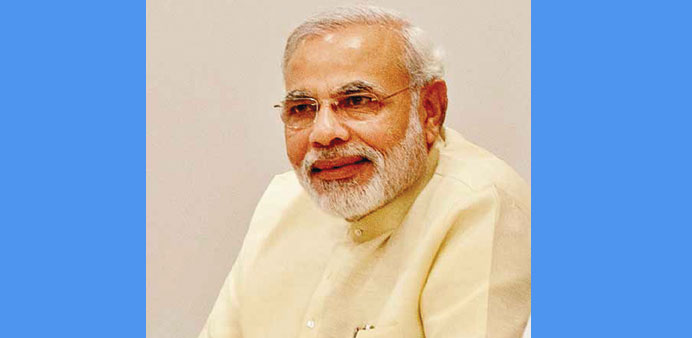Bloomberg/Mumbai
Indian Prime Minister Narendra Modi’s decision to triple spending on roads and highways is cheering builders in India, especially the smaller contractors, as he steps up efforts to upgrade the nation’s creaky infrastructure.
A custom index of eight stocks has gained 8.6% this year, compared with the 3.3% drop in the benchmark S&P BSE Sensex. The gauge has surged 73% since Modi’s Bharatiya Janata Party swept to power last May, as construction rebounded fourfold to about 13 kilometres (8 miles) a day.
Spending jumped threefold to Rs350bn ($5.3bn) in the April-August period this year, sparking a rally that more than quadrupled the market value of Gayatri Projects in 2015.
“Infrastructure is a sector that has high visibility,” said Arvind Gupta, chief financial officer at Mumbai-based J Kumar Infraprojects, whose shares have advanced 48%. “Any government needs to follow the development mandate. The voter sent a clear signal that she will vote only for someone who will enable development.” The outperformance of road builders stands in contrast to the nation’s power producers that are grappling with erratic fuel supplies and losses from selling below cost to state-owned distributors. An index of 19 generators has slid 8% this year, underscoring the challenge to Modi’s goal of improving public utilities. India is ranked 90 out of 144 by the World Economic Forum for the quality of its infrastructure.
In his first year in office, Modi agreed to fund up to 40% of public-private highway projects, fast-tracked forest permits while ensuring that at least 80% of the land is in government possession before contracts are given as he tries to unclog some $212bn of stalled infrastructure projects.
The steps have reduced the risk of projects getting stuck pending land acquisition, a key roadblock in pushing investment, said Vijay Kumar C, an analyst at India Ratings & Research, the local unit of Fitch Ratings.
In August, Modi allowed developers to sell 100% stake in completed road projects, a move that would help companies raise money to repay debt or invest in other projects. Besides Gayatri Projects, KNR Constructions has surged 82% this year, while Madhucon Projects has more than doubled. Sadbhav Engineering is up 23%.
“Stocks of smaller road companies with better balance sheets have risen and they will continue to do well due to government’s thrust on the sector,” said Adhidev Chattopadhyay, an analyst at Mumbai-based brokerage Elara Securities India Pvt.
“It’s an opportunity for investors as it is comparatively easier to track this sector in terms of bidders and the size of orders.”
On the other hand, a solution to end India’s notorious blackouts isn’t in sight yet. Some areas of the nation, including the most populous northern state of Uttar Pradesh, continue to experience hours of outages during summer when the demand peaks and cash-starved state utilities cut back on electricity purchases.
While Modi’s government has managed to boost fuel output at state-owned Coal India, lowering the need for costly imports, stressed assets at a 13-year high at Indian banks have made lenders reluctant to take on more risk, stalling other infrastructure projects. Moreover, power distributors are forced to sell below cost to keep tariffs affordable, while delays in government subsidy payments strain their finances.
“Roads and power are both very important segments of infrastructure and would require most of the capital,” said Abhishek Tyagi, a Singapore-based analyst at Moody’s. “In power, distribution companies aren’t able to buy more, leading to poor utilisation rates.” PTC India is the worst performer this year on the S&P BSE India Power Index, with a drop of 32%, followed by Adani Power, which has slid 31%. Bharat Heavy Electricals, the nation’s top power-equipment maker, and GMR Infrastructure are among the bottom five in the 19-member gauge.
Billionaire Gautam Adani-owned Adani Power may report a record Rs13bn loss in the year ending March 31, according to analyst estimates compiled by Bloomberg. GMR Infrastructure, which gets 41% of its revenue from power, may report a loss of Rs13.8bn. Earnings at state-owned NTPC, the biggest generator, may drop to a six-year low in the 12 months ending in March.

Modi: Focusing on improving public utilities.


